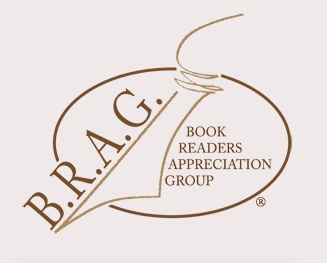“Write what you know!“
There’s a statement that was hammered home at us when we were newbie writers.
Well, I half obeyed when I wrote my first book INCEPTIO. Actually, it was less than that. I knew the military bit, I’d clambered over a lot of Roman Europe and I knew what Central Europe looked like. I could put together words in a few languages, including Latin. Additionally, I’d studied history and the historical research methodology.
So far so familiar.
But what on earth possessed me to write INCEPTIO in the first person as a young woman in an alternative New York and who had also lived in New Hampshire and Nebraska? Although I had a number of American friends and ex-colleagues, I’d never been there. Still, it seemed to work and it was an alternative version of our real world, so I had a get-out. 😉 I did go there later and was relieved it looked like the New York City in my book.
Perhaps you should you only set your book in places you know…
If you’ve been to a place or better still, live there, you know what it looks like. You know the smell and scents, landscape and buildings – the ‘feel’ of the place. People who live there will probably be delighted to find a story set in their place, be it rolling countryside, a bustling city or a seaside town. Thinking practically, you may well be able to give a talk there when your book is published, whether in a library or bookshop, and hopefully get some press coverage from the ‘local interest’ angle.
The big plus is that you can visit it, take photos, make notes, drink at a bar, gaze in the shops, spend time in the museum, and bookshops and just walk around taking it all in. If it’s a remote moor or a mountain pass, walking across the area gives you a genuine feel of being there. You know the effort and time it takes to walk, drive or ride between places in such a landscape.
You’d be wise to note the names of any local prominent people, or independent or famous shops or hotels, so that you don’t badmouth them by mistake or use their name for your villain or place of tragic criminal activity. Equally, buy some copies of the local newspaper and subscribe to one or two local online forums to find out what’s happening in that location and what people are concerned about. Oh, and read the property pages or go into an estate agent and take a copy of their listings or read their online offerings. The style, availability and cost of renting or buying may very well be a crucial point in your story for your characters.
But what if you decide to make it all up…?
Creating your own location means you have full creative control, but it also means that you have the responsibility to the reader to build that world in a credible and consistent way.
In one way, you’re released from the stress of researching every last detail of a real setting that people know, but it does mean that the made-up world must feel authentic even though if might be a space colony on Mars or 4th century Ancient Rome.
However, if writing a fictional world in the past, you will need to think how the landscape looked, what noise and smells dominate, how dangerous it is to walk along a street. Are there mountains, rivers, tracks, developed roads? What’s the weather like? Who rules and is there a legal/judiciary system? What’s growing in the fields? How are the street lights powered? How do people earn their money and what’s the level of technology and culture?
If you’re on Mars, you also need to think about how to move in different gravity and whether you’ll ever be able to keep the infernal red dust out of the food replicator. You’ll probably need to research science fiction tropes and works by some of the better writers in the field as there are definitely strong conventions for the genre. Woe betide you if you get it wrong!
However, although – unexpectedly – there may be a considerable amount of research, the freedom offered by a fictional world means you can bend it to fit in with your story. Sometimes, it can play a pivotal role in that story whatever its genre.
Some practical thoughts
- Visit real places whether you’re going to use that real place or clone it for an imaginary setting. I’ve been to many Roman ruins which show the outline of houses, baths and street patterns which inspire their 21st century Roma Nova versions. For Mel’s adventures, I know most of the places In Real Life, be they Orpington High Street, Poitou, an army barracks or the centre of Berlin.
- Do research why that setting is like it is. What is its history? Is it a market town, a dingy suburb, a beach resort? Has anything exciting or tragic happened there?
- And finally, think about combining the two, dipping into a real place but inventing fictional elements or, conversely, a fictional town with features that could be very familiar to the readers.
Happy writing!
Alison Morton is the author of Roma Nova thrillers – INCEPTIO, CARINA (novella), PERFIDITAS, SUCCESSIO, AURELIA, NEXUS (novella), INSURRECTIO and RETALIO, and ROMA NOVA EXTRA, a collection of short stories. Audiobooks are available for four of the series. Double Identity, a contemporary conspiracy, starts a new series of thrillers. JULIA PRIMA, Roma Nova story set in the late 4th century, starts the Foundation stories. The sequel, EXSILIUM, is now out.
Find out more about Roma Nova, its origins, stories and heroines and taste world the latest contemporary thriller Double Identity… Download ‘Welcome to Alison Morton’s Thriller Worlds’, a FREE eBook, as a thank you gift when you sign up to Alison’s monthly email update. As a result, you’ll be among the first to know about news and book progress before everybody else, and take part in giveaways.















Leave a Reply